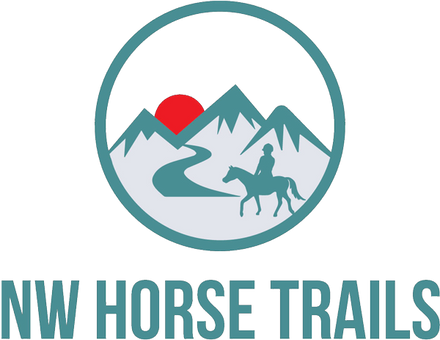One of my recent blog posts sparked a bit of a controversy on Facebook. It seems that some folks ABSOLUTELY LOVE the horse camp I’d written about, while others ABSOLUTELY HATE it. Wow! Why would folks have such diverse opinions?
Some folks love this horse camp; others hate it.
It turns out the people who love the camp enjoy riding on challenging trails like those found nearby. Also, they rode the trails after they had been cleared of fallen logs. The people who hated this camp either wanted less-challenging riding than these trails offer, or they found the trails blocked with downed logs that they’d had to ride around or jump over. No fun!
If the trails haven’t been cleared, it may ruin your trip.
Expectations Matter!
I’ve had similar reactions to various riding areas myself. If the weather is glorious, the trails and the horse camp are in good shape, and the trails are pretty much what I expect, I have a wonderful time.
If the weather, trails, and horse camps are what I expect, I have a great time.
If it’s raining, the mosquitoes are horrible, the trails are muddy and slick or blocked by fallen trees, or the riding is a lot more difficult than I expect, I’m miserable. And if I have a bad experience, it shapes my opinion of that horse camp.
It’s hard to have a great time when you’re soaking wet, or when the trails are more difficult than you expect.
The controversy about my recent blog post made me stop and think about what we can each do to make sure our riding and camping experiences are pleasurable. It often boils down to having the experience you expect to have. Do your homework before you go, and you’ll improve your chances of having a marvelous trip!
Five Tips for a Great Trip
- Read up: Learn all you can about the area you’ll be going to, so you know whether the trails are challenging or easy, whether you and your horse are in shape for the riding you’ll encounter, and what facilities the horse camp offers. My guidebooks are good sources, but you can also learn a lot from a simple internet search.
- Call ahead: Before you go, call the local land manager (the Forest Service, BLM, State Parks, etc.) to learn about trail conditions. In some areas, it’s easy to ride around a downed log, but in other areas, a tree across the trail can be a show stopper. If you learn that the trails haven’t been cleared, you may want to choose a different destination.
- Ask other riders: If you’re a member of an equestrian group, post a message on their Facebook page or email group and ask about the area you’ll be visiting. For example, Oregon Equestrian Trails members can post on a members-only Yahoo group or Facebook page and request up-to-date information from other members.
- Check the weather: Check the weather forecast for the area you’ll be traveling to, so you can bring the right clothing and equipment for you and your horse.
- Be prepared: Carry emergency equipment in your saddlebags. At a minimum, you’ll want to have a detailed map of the trails, a GPS or compass, a knife, food and water, an extra layer of clothing, a flashlight, a first aid kit, and a way to call for help (cell phone if there is service, a satellite signaling device, and a loud whistle and signaling mirror). If something goes wrong, having the right stuff with you can make the difference between a mild misadventure and a disaster.
Learn More
You’ll find detailed information about the trails and horse camps in Oregon and SW Washington in NW Horse Trails’ guidebooks for horseback riders, available at www.nwhorsetrails.com. These books include information about horse camp facilities, terrain, elevation change, trail difficulty, how to contact the land manager, and a list of important emergency equipment to carry in your saddlebags.
Have fun on the trails!
